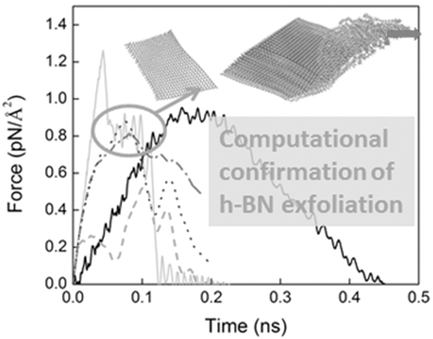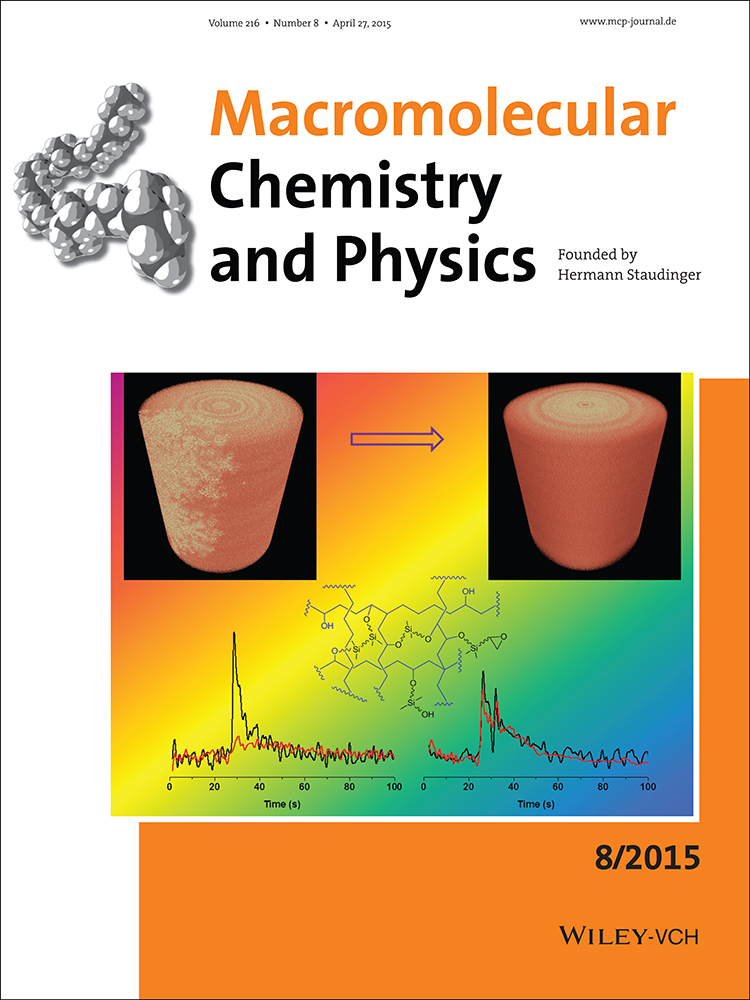Polyethylene-Assisted Exfoliation of Hexagonal Boron Nitride in Composite Fibers: A Combined Experimental and Computational Study
Abstract
A joint experimental and computational approach is used to explore the exfoliation mechanism for hexagonal boron nitride (h-BN) in polyethylene (PE)/h-BN composite fibers during hot-drawing. A shear-flow gel-spinning apparatus is utilized to fabricate PE/h-BN composite fibers with 11 wt% h-BN loading. Different exfoliation states of the h-BN platelets before and after hot-drawing are experimentally examined using wide-angle X-ray diffraction and Raman spectroscopy. Compared with the undrawn (as-spun) fibers, both analyses show that the intensity of the major h-BN peaks attributed to interlayer interaction significantly decreased for the drawn fibers, suggesting exfoliation of the h-BN. A full atomistic steered molecular dynamics approach is used to obtain baseline force and work required for h-BN layer separation, as well as to simulate the h-BN exfoliation behavior as a result of the PE matrix shearing effect in the composite. Computational results indicate that a large interactive area between the polymer and the fillers is required to induce enough stress transfer to exceed the h-BN exfoliation force/energy threshold. Once this threshold is achieved, complete exfoliation of the platelets to monolayer h-BN is demonstrated. By understanding the relationship between interfacial area and interaction strength between polymer matrix and fillers, this work provides new insight toward use of polymers for producing mono- and few-layered h-BN.





